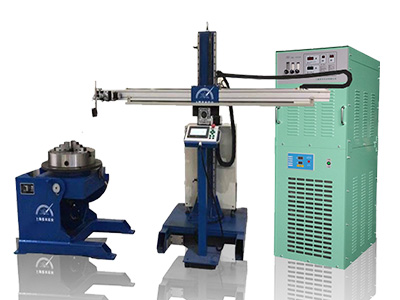According to the editor of Duomu Industry, plasma cladding technology is a new type of material surface modification technology. It uses plasma beam as a heat source to obtain excellent wear resistance, corrosion resistance, heat resistance and resistance on metal surfaces. Impact. The basic principles are:

Under the high temperature of the plasma beam, the process of high-energy beam deposition is to send the alloy powder to the surface of the workpiece to be strengthened through the synchronous powder feeder, and the alloy powder is irradiated by the high-energy beam to melt, and at the same time the shallow layer of the workpiece surface melts, forming an alloy on the surface of the workpiece Molten pool. After the high-energy beam is removed, the alloy molten pool is rapidly solidified under the action of the rapid heat transfer of the workpiece itself and the radiation heat transfer of the air around the workpiece to form a uniform and dense composition, a fine and uniform structure, and no microscopic pores and cracks.
At present, plasma cladding mainly uses nickel-based, cobalt-based and iron-based self-fluxing alloy powders. Ceramic composite coatings or gradient coatings can be formed by adding ceramic phases and ceramic forming elements such as tungsten carbide and titanium carbide to the self-fluxing alloy. The thermal spray powder has a large crystallization temperature range. When applied to plasma beam cladding, the porosity and crack tendency of the coating increase.
Plasma cladding is a rapid surface metallurgical process, which can obtain a variety of alloys that conform to the phase diagram and high-temperature alloys that are far from equilibrium. Therefore, the development of special materials for plasma cladding will be one of the important research directions of plasma cladding. The introduction of cladding materials will directly affect the quality and performance of the cladding.
The pre-introduction method is easy to coat powders of mixed ingredients, but it is difficult to make the thickness of the preset layer uniform, the penetration and dilution rate of the substrate is difficult to control, it is easy to warp during multi-pass grinding, and the volatilization of the binder can easily cause powder splashing and pores. . In addition, the production efficiency is low and the powder waste is large.
Therefore, in recent years, the synchronous powder feeding cladding technology has received more and more attention and has become a research hotspot at home and abroad. Compared with the pre-induction method, the simultaneous powder feeding method requires prefabricated alloy powder, but it is limited to alloy matching that conforms to the equilibrium phase diagram. To obtain a superalloy layer, mixed powder must be used, but the density, particle size, powder shape and solid fluidity of each component in the mixed powder are basically the same, and the fluidity is good, otherwise it will bring problems to the powder feeding process and affect the cladding layer Internal and internal performance.
The editor of Duomu Industry reminds everyone that plasma cladding is a rapid non-equilibrium solidification process with the functions of supersaturated solid solution strengthening, microstructure strengthening, dispersion strengthening and precipitation strengthening. Compared with laser cladding and electron beam cladding, plasma cladding is a new surface modification technology with high quality, high efficiency and low cost. Negative pressure plasma cladding composite new material strengthening technology marks the leading level in this field, and has been successfully applied to coal mining and transportation equipment.
